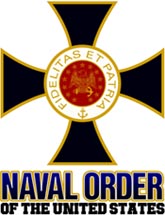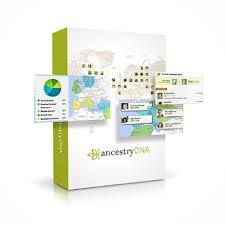Sea Captains: San Francisco 1800s
Nathaniel Nowell
Captain, Brig Canonicus
Sailed from Boston, April 2, 1849, to San Francisco, arriving November 2, 1849 (185 days).
Daily Alta California, Shipping Intelligence, August 3, 1851
DIED: On the 27th ult., Captain Nathaniel Nowell, of Newbury, Mass, aged 53 years.
"Captain N. arrived in San Francisco in the brig Canonicus about two years ago. He has left a wife and warm friends in Boston."
(Editor's Note: Even though the obituary states that Captain Nowell arrived on the Canonicus "about two years ago," he is not noted on the 1849 list as having been on the Canonicus.)
July 24, 1852: "Fire broke out in the store-ship Manco, which lay in close proximity to the wharves, near the corner of Mission and Stewart streets. The store-ship Canonicus an old "forty-niner," which was moored alongside, next caught fire. The firemen turned out, as usual, but from the want of proper resting places found much difficulty in working their engines with effect.
There happened to be a large quantity of gunpowder on board the Manco at the time, the knowledge of which fact, when circulated, speedily sent to a respectful distance the curious crowd that had gathered on the neighboring ships, and wherever they could procure a view of what was going on. The firemen, however, gallantly stuck to their posts, and poured vast quantities of water into the hold of the burning ship.
By these means the powder was so damped that only partial explosions of small quantities took place. At last, the ship was scuttled, and she sank in shallow water. The flames continued, and were only extinguished a considerable time afterwards. The losses sustained by both the Manco andCanonicus were estimated at about $50,000."
July 26, 1853, Sacramento Daily Union, Sacramento, California
Fire in the Harbor.
A destructive flre broke out yesterday afternoon, about 4 o'clock, in the storeship Monko, lying above Market street wharf (near teh corner of Mission and Stewart streets). The alarm was quickly given, and in a few minutes the firemen were on the spot and in service without delay, though they had to labor under great disadvantages, as the hose had to be laid over the shipping to get at the fire.
The ship Herbert, which had been disabled last week outside the Heads, lay along side the burning vessel, but was saved by the exertions of the firemen. The storeship Canonicus, which was next to the Monko, caught also, but was saved by the Pennsylvania No. 12, who had their apparatus in a lighter, and went outside of the vessel, doing good service, as the only damage done on this ship was to the goods stored on deck. The ship in which the fire originated, was still burning when we went to press, the light from her illuminating the city with its glare. Both vessels belonged to Crosby & Dibblee, and were full of goods.
There was a large quantity of gunpowder on the Manco at the time, the knowledge of which speedily sent the curious crowd to a respectful distance. The firemen poured vast quantities of water into the hold of the burning ship. The ship was scuttled, and she sank in shallow water. The flames continued and were only extinguished a considerable time afterwards.

The Sea Chart
The Illustrated History of Nautical Maps and Navigational Charts
John Blake
The sea chart was one of the key tools by which ships of trade, transport and conquest navigated their course across the oceans. John Blake looks at the history and development of the chart and the related nautical map, in both scientific and aesthetic terms, as a means of safe and accurate seaborne navigation. This handsome work contains 150 color illustrations including the earliest charts of the Mediterranean made by thirteenth-century Italian merchant adventurers, as well as eighteenth-century charts that became strategic naval and commercial requirements and led to Cook's voyages in the Pacific, the search for the Northwest Passage, and races to the Arctic and Antarctic.
The Authority to Sail: The History of U.S. Maritime Licenses and Seamen's Papers
Robert Stanley Bates, George Marsh (Editor), John F. Whiteley (Forward) (Batek Marine Publishing, 2011; Nominated in 2012 for a Pulitzer Prize)
This book depicts important aspects of our maritime history as a result of original research done by the author, Commodore Bates, the holder of an unlimited master's license who has enjoyed a distinguished fifty-year career in both the Coast Guard and the American Merchant Marine.
The U.S. Coast Guard issues all Captain Licenses for U.S. Ports.
Note: Other countries have different regulations, i.e. the RYA (Royal Yachting Association), conducts certification for Britain and Ireland. As of 2011, they did not recognize the USCG certification; certification through their courses was required.Master Unlimited is a licensed mariner in ultimate command of a vessel any gross tons. The captain is responsible for its safe and efficient operation, including cargo operations, navigation, crew management and ensuring that the vessel complies with local and international laws. All persons on board, including officers and crew, other shipboard staff members, passengers, guests and pilots, are under the captain's authority and are his or her ultimate responsibility. The STCW defines the Master as Person having command of the ship.
The Sea Chart
The Illustrated History of Nautical Maps and Navigational Charts
John Blake
The sea chart was one of the key tools by which ships of trade, transport and conquest navigated their course across the oceans. Herein is a history and development of the chart and the related nautical map, in both scientific and aesthetic terms, as a means of safe and accurate seaborne navigation. 150 color illustrations including the earliest charts of the Mediterranean made by 13th-century Italian merchant adventurers, as well as 18th-century charts that became strategic naval and commercial requirements and led to Cook's voyages in the Pacific, the search for the Northwest Passage, and races to the Arctic and Antarctic.
Get Your Captain's License. Fifth Edition
Charlie Wing
Considered the quickest, easiest, and least expensive way to prepare for the U.S. Coast Guard captain's ratings exams required for anyone who takes paying passengers on a boat, and useful for serious boaters who want to save money on insurance. 350 pages of seamanship and navigation tutorials. More than 1,500 questions and answers from the Coast Guard exams. Includes an interactive CD-ROM with all 14,000 questions and answers in the USCG database, so you can take an unlimited number of practice exams










 Copyright ~ 1998-2018.
Copyright ~ 1998-2018. 